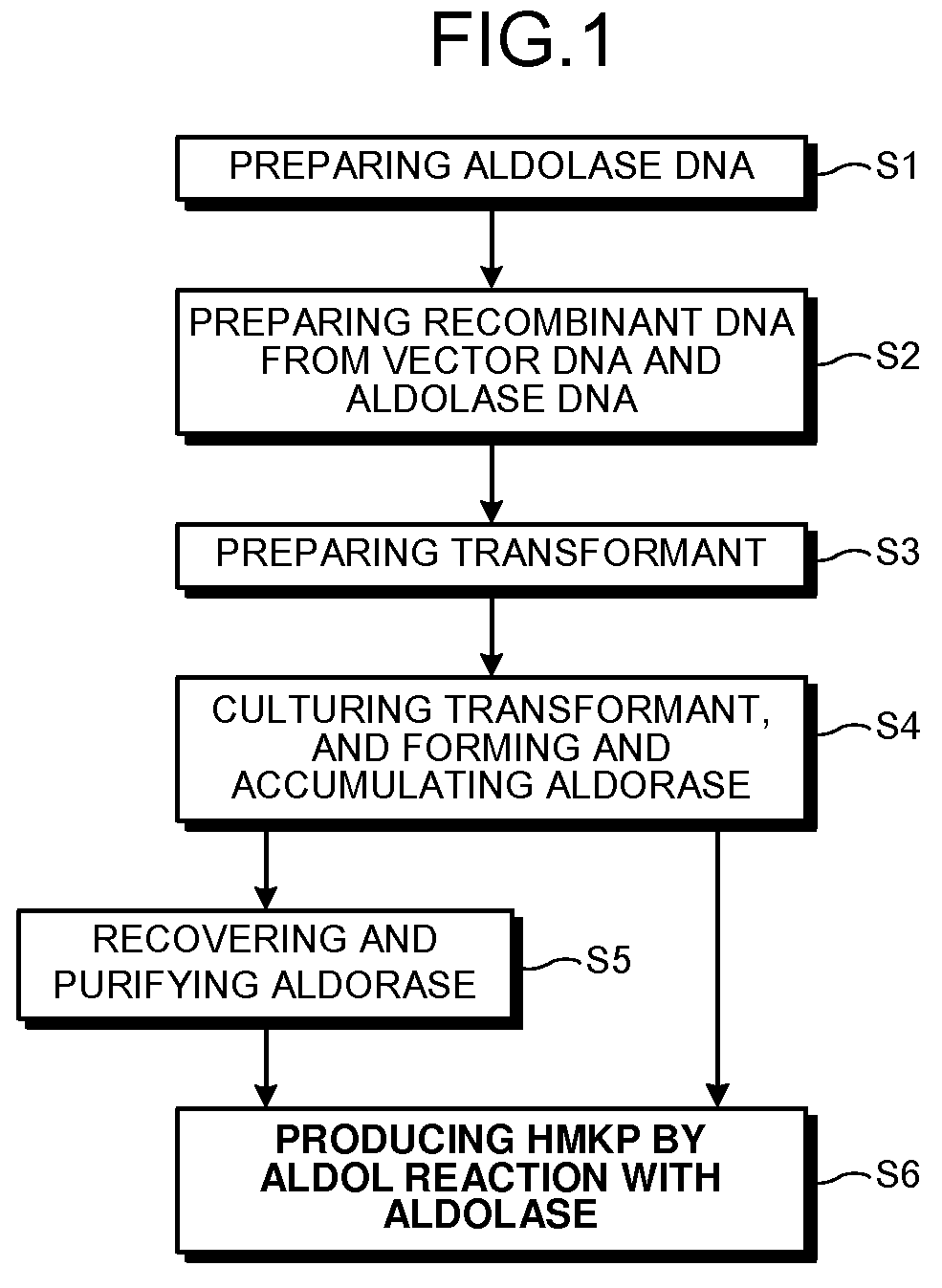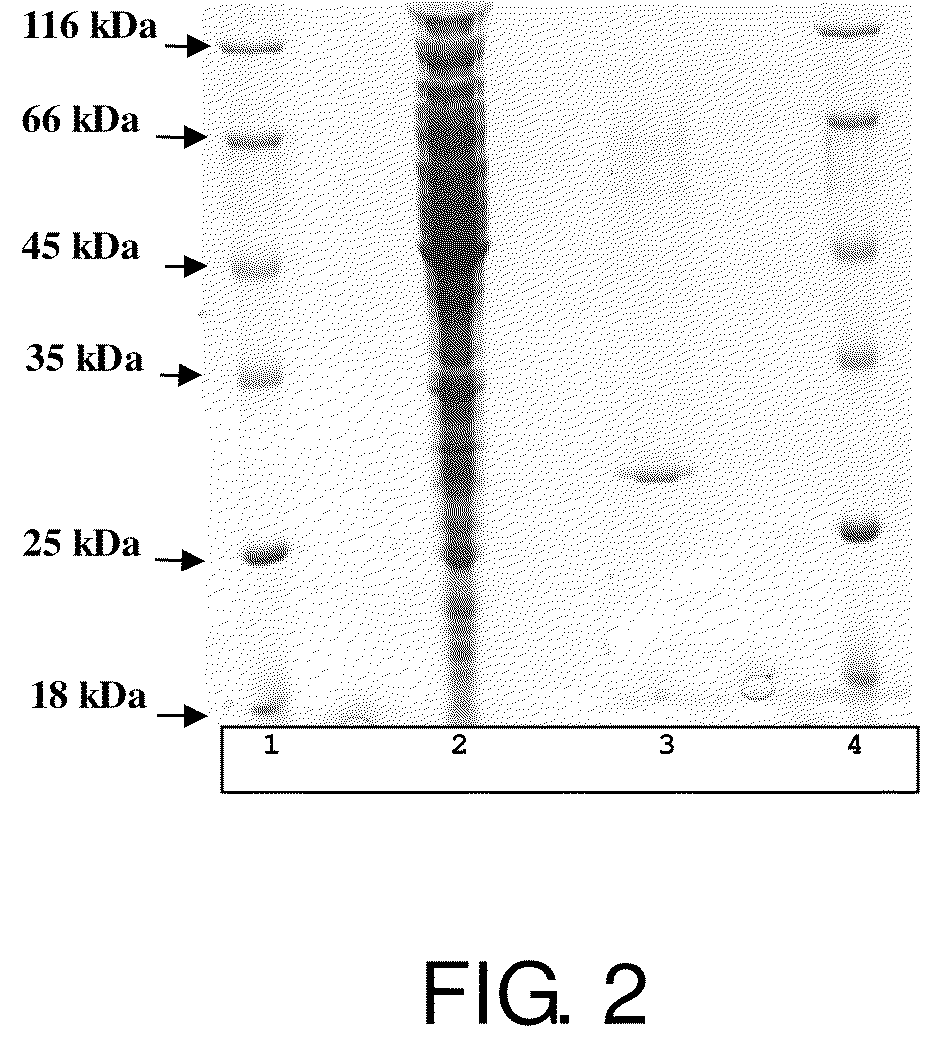Aldolase and production process of 4-hydroxy-L-isoleucine
a technology of aldolase and production process, which is applied in the field of microorganism industry, can solve the problems of unstable enzymes, unsatisfactory methods, and large quantities readily obtained, and achieve the effects of increasing the expression of aldolase and enhancing the activity of aldolase and/or branched-chain amino acid aminotransferase, and increasing the expression of aldolase and/ou
- Summary
- Abstract
- Description
- Claims
- Application Information
AI Technical Summary
Benefits of technology
Problems solved by technology
Method used
Image
Examples
example 1
Purification of asiHPAL
[0193]The purification protocol includes the following procedures.
[0194]Step1: 1 ml of overnight bacterial culture (grown for 12 h at 34° C.) of Arthrobacter simplex AKU626 was used to inoculate 5 liters of LB-broth [8×(375 ml in 1 L flask)]. Cells were cultivated at an optimal temperature for about 24 hours. Then, cells were harvested by centrifugation (16000×g) at 4° C., and re-suspended in 30 ml of buffer A [50 mM KH2PO4 (pH 7.4 adjusted by KOH)] supplemented by 1 mM PMSF (phenylmethylsulfonyl fluoride).
[0195]Step2: Cells were disrupted by 3-5 passages through a French pressure cell (max P=2.5 Psi) followed by centrifugation to remove debris. Protein preparation was passed through Sephadex G-15 column (2.6×28 cm) equilibrated with buffer A.
[0196]Step3: Anion-exchange chromatography (AEC 1) was carried out using ÄKTAbasic100 system supplemented with 50 ml DEAE (fast flow) column (d=1.6 cm). 40-50 ml of the protein preparation obtained from Step2 were applied...
example 2
Determination of asiHPAL N-Terminal Sequence
[0206]2.1 Western Blotting of the asiHPAL.
[0207]asiHPAL was immobilized on the Sequi-Blot PVDF membrane (Bio-Rad) using trans-Blot SD sell (Bio-Rad). Optimized blotting conditions are as follows: Dun carbonate transfer buffer: 10 mM NaCHO3, 3 mM Na2CO3 without methanol, six pieces extra thick filter paper / membrane sandwich, starting current 5.5 mA / cm2, transfer time—1 hour).
[0208]2.2 Sequencing of N-Terminal End of asiHPAL.
[0209]Determination of asiHPAL N-terminal sequence was done using the 491cLC Protein Sequencer (Applied Biosystems, USA). 26 cycles were performed. As the result, the following amino acid sequence was determined:
[0210]
NH2-Pro-Phe-Pro-Val-Glu-Leu-Pro-Asp-Asn-Phe-Ala-Lys-Arg-Val-Thr-Asp-Ser-Asp-Ser-Ala-(SEQ ID NO: 3)Gln-Val-Gly-Leu-Phe-Ile . . . —COOH.
[0211]An alignment of this N-terminal sequence with all known proteins (BLAST search) revealed a single protein with a similar N-terminal sequence. It is the HHDE-aldolase (2...
example 3
Cloning of asiHPAL Gene Encoding HMKP-Aldolase from Arthrobacter simplex (NBRC 12069)
[0213]To amplify the DNA fragment from the chromosome of Arthrobacter simplex which contains the asiHPAL gene, PCR was performed using the degenerative primer asiN10 (SEQ ID NO: 4), which was designed based on the N-terminal amino acid sequence of asiHPAL determined previously (FIG. 4). Primer asiN10 contains a degenerative part on the 3′-end thereof and has a sequence of 21 nucleotides, which are not complementary to the asiHPAL gene. This is necessary for further amplification of the PCR product. PCR was performed in a volume of 40 μl with 0.1 μg of Arthrobacter simplex chromosomal DNA and primer asiN10 (20 pmoles). PCR conditions were as follows: 95° C.—10 sec; 53° C.—20 sec; 72° C.—40 sec; 50 cycles.
[0214]Surprisingly, as a result of the PCR, a single PCR product was obtained (FIG. 5, track 3). Primer asiN10 appeared to be suitable for use as a forward and reverse primer simultaneously. Furtherm...
PUM
| Property | Measurement | Unit |
|---|---|---|
| pH | aaaaa | aaaaa |
| molecular weight | aaaaa | aaaaa |
| molecular weight | aaaaa | aaaaa |
Abstract
Description
Claims
Application Information
 Login to View More
Login to View More - R&D
- Intellectual Property
- Life Sciences
- Materials
- Tech Scout
- Unparalleled Data Quality
- Higher Quality Content
- 60% Fewer Hallucinations
Browse by: Latest US Patents, China's latest patents, Technical Efficacy Thesaurus, Application Domain, Technology Topic, Popular Technical Reports.
© 2025 PatSnap. All rights reserved.Legal|Privacy policy|Modern Slavery Act Transparency Statement|Sitemap|About US| Contact US: help@patsnap.com



